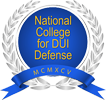Underage OVI Attorney in St. Clairsville
The law contains a specific offense called OVUAC (Operating a Vehicle After Underage Alcohol Consumption) for individuals under 21 who drink and drive. This charge, also known as “underage consumption”, is described in Section 4511.19(B) of the Ohio Revised Code. To better understand this law, it is advisable to consult with a St. Clairsville OVI lawyer.
While the legal blood alcohol content (BAC) limit for adults over the age of 21 is set at 0.08 percent, minors (those under 21) have a significantly lower limit. The penalties for OVUAC are generally lower compared to adult offenses, although certain consequences such as driving privileges and license suspension apply to both age groups.
Regarding the BAC levels for OVUAC, the precise wording may differ depending on the type of test administered (whole blood, blood serum or plasma, breath, or urine). In most cases, a blood alcohol concentration of at least 0.02 percent is considered driving while intoxicated.
It is crucial to emphasize that if you are under 21 and a law enforcement officer detects alcohol on your breath during a traffic stop, you can be arrested for OVUAC, even if you do not appear impaired. Ohio maintains a zero-tolerance stance towards underage drinking and driving.
Driving After an OVUAC Charge
Any driver under 21, or a teen driver, who registers a blood alcohol content (BAC) between 0.02 percent and 0.08 percent in a breath test will be charged with OVUAC.
Penalties for underage consumption and adult OVI (Operating a Vehicle Impaired) differ to some extent. For instance, as long as the underage driver’s BAC remains below 0.08 percent (or any other level specified in Section 4511.19(A) of the revised code), they will not face an Administrative License Suspension (ALS) issued by the Bureau of Motor Vehicles.
However, if the driver in question refuses chemical testing of their blood, breath, or urine, they will receive an ALS. In such cases, the procedures outlined by the BMV Form 2255, including those applicable to adult OVI, will be followed.
Furthermore, an underage driver whose test results reveal a BAC above 0.08 percent (or any other level specified in Section 4511.19(A) of the revised code) will also be subject to an ALS and the relevant BMV Form 2255 procedures.
Probable Cause in Underage Consumption
It is important to note that a minor driver can face arrest for OVUAC, regardless of the immediate effects of alcohol consumption. The focus of underage drinking and driving is not on the impairment of the driver.
Even if the driver has taken a small sip of beer and the officer detects the scent or suspects alcohol consumption, the officer has the authority to request a breath test. Breath tests can be requested even without probable cause of intoxication. If the underage driver refuses to take the test or shows a reading between .02 and .08 percent, the officer can complete the necessary paperwork to administratively suspend the driver’s license due to underage consumption, not OVUAC. The driver will not be arrested for OVI.
The ALS form will be completed regardless, but it will only be processed if the driver refuses the breath, blood, or urine test.
When You’re an Impaired Underage Driver
If an officer stops a minor for a traffic violation and suspects impairment due to alcohol or drugs, the young individual will be arrested and receive an ALS. The arrest will be treated in the same manner as any OVI arrest, with similar charges.
The initial court appearance for the offender will be scheduled no less than five days after the arrest. If convicted, the juvenile will face comparable penalties to those imposed on adults, which may include the opportunity to attend alcohol education classes.








